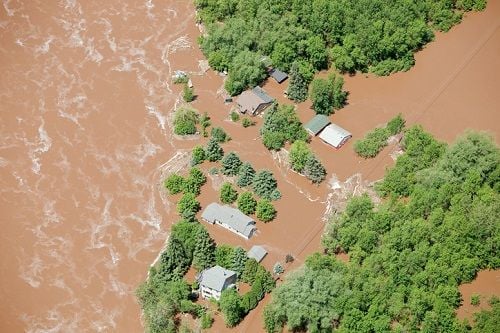

They say knowledge is power – in insurance, for instance, definitely the more you know, the better.
Aimed at addressing a gap in current flood models, researchers at Lancaster University and the University of Oslo have developed a new one, based on a decade of data from three Norwegian cities. They think the model, which centres on the relationship between weather conditions and the number of insurance claims, is applicable to the likes of the UK.
“Existing models lack flexibility to explain what causes high numbers of claims and always underestimate the quantity of claims, so there is a clear need for better models that can explain the weather conditions that cause high numbers of insurance claims,” noted Lancaster University’s Dr Christian Rohrbeck in a release published by AlphaGalileo.
The new statistical model “more accurately” captures that weather-claims relationship and can aid in insurance premium pricing, as well as serve as a reference for infrastructure spending. It was outlined in the study “Extreme Value Modelling of Water-Related Insurance Claims” led by Rohrbeck.
“By using a clustering approach, which has not been used in insurance before, we are getting a better insight into the association between weather conditions and claims, which helps to more accurately predict how many properties will flood,” he said. “The improved information from our model should help insurance companies, and authorities, to offer improved information to their customers, and residents, when weather conditions are likely to result in substantial localised flooding.”
The clustering technique brings together insurance claims made over a small number of days, which the researchers believe are likely to be associated from just one weather event. In contrast, existing models separately count claims made on consecutive days.
